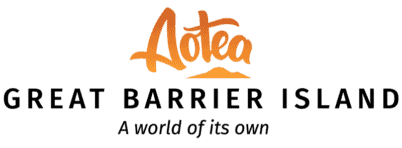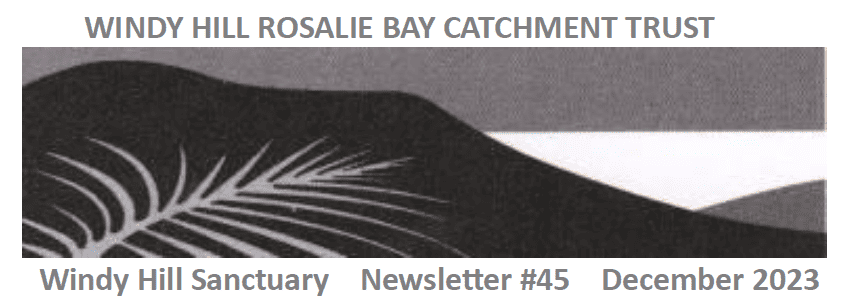
Seasons Greetings
We’re celebrating 25 years since the Little Windy Hill Company approved a modest pest management programme in October 1998. Pest management got underway in April 1999 with 100 rat traps and a part time worker.
Today, the Windy Hill Sanctuary undertakes integrated pest management and species monitoring over 800 hectares with a field team of up to 6 people. There are 58 landowners participating from 16 properties.
There are approximately 6000 pest management devices in the field.
We have created a network of over 100ks of trapping routes in 6 pest managed areas – Windy Hill, Big Windy, Rosalie Bay, Taumata, Tryphena Ridge, and Benthorn.
As a perspective – I was 45 when we started and am now 70.
One of the delights from this longevity is that we have learnt so much about this area of Aotea and all of us involved have developed what’s known as ‘place based ecological literacy’. We know more about what’s here, where it is, how it is faring, and about the relationships between species than when we started.
Following are a selection of our discoveries……
Kohia – Native NZ Passionflower (Passiflora tetrandra)
Just discovered, this huge vine, is endemic to NZ. We must have walked past it for years as it is not easily identified by the vine stems or leaves which are hidden in the canopy. What gave it away was its tiny flower. The multiple vine ‘trunks’ are as thick as an arm and can climb up to 10 metres. Since this one was identified more have been found. The vine fruits from summer to autumn – they are lemon shaped, orange, and up to 30mm long and are a traditional food for Māori.
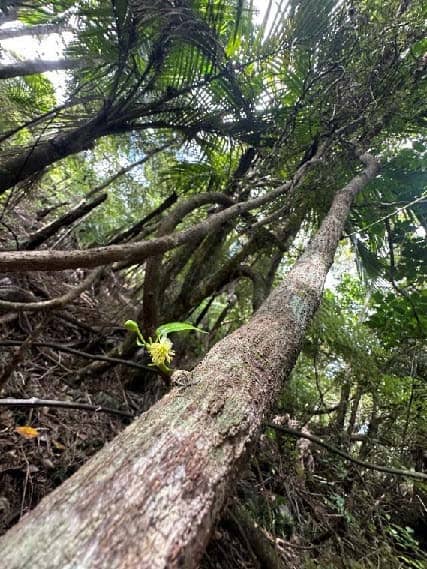
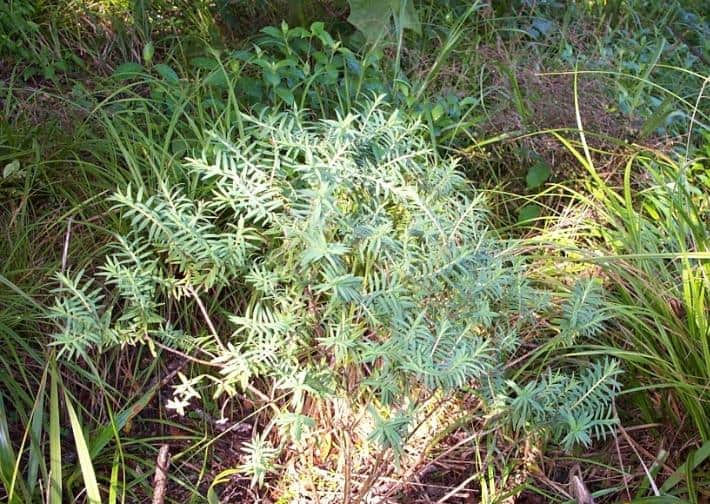
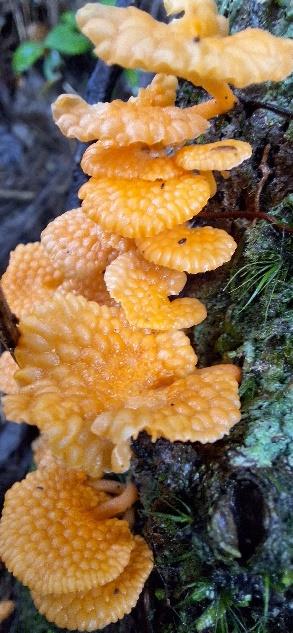
Regionally rare Pimelea Tomentosa
Sometime back, a visiting plant ecologist estimated that the largest number of Pimelea Tomentosa plants in the Auckland region existed in the Sanctuary. When first discovered there were hundreds of plants but once the feral goats were removed in 2004, they began to be outgrown by surrounding vegetation. Around 30 plants were marked to be kept free of competing vegetation and seeds collected and propagated. About 150 seedlings were sold through the Aotea Community Native Plant Nursery and now this plant can be found in local gardens.
Fungi
Fungi in all their glorious array have become a real interest in the Sanctuary. A four day fungal foray with Landcare Researcher Dr Marj Padamsee in 2012 found 96specimens that Landcare Research did not have samples of. Our knowledge continues to grow as every autumn the field team has their eyes peeled looking for sometimes tiny fungi which can be readily identified with our phone apps.
Rat Dynamics
In the early 2000’s the proportion of kiore trapped in the bush was 8% – today they make up to 70% of our catch. This same shift in rat dynamics is replicated at Glenfern Sanctuary and Motu Kaikoura Island. Kiore are smaller more cautious animals than ship rats so constant refinement of our trapping array is required to maintain them at low levels.
Rats are present on Aotea in enormous numbers – we have trapped 47,000 and probably poisoned a similar number. Prior to the rat eradication of Rakitu/Arid island the rat monitoring recorded the highest levels seen in NZ and this is likely the case for the main island.
Potential Impacts of Climate Change
There is no doubt that both plant and animal species here are being impacted by drought.
Ornate skinks have been monitored twice yearly since 2006 both in and out of the Sanctuary and are themost abundant of all monitored lizards. They are a solitary species with a life expectancy of possibly 10-20 years in the wild, especially in areas with good pest control. They give birth to live young in January/Februaryand it appears they may be able to have up to 8 offspring in a single clutch. However, they may be in trouble – the graph below indicates that during periods of drought the numbers drop markedly and that the numbers are not recovering to previous levels between droughts.
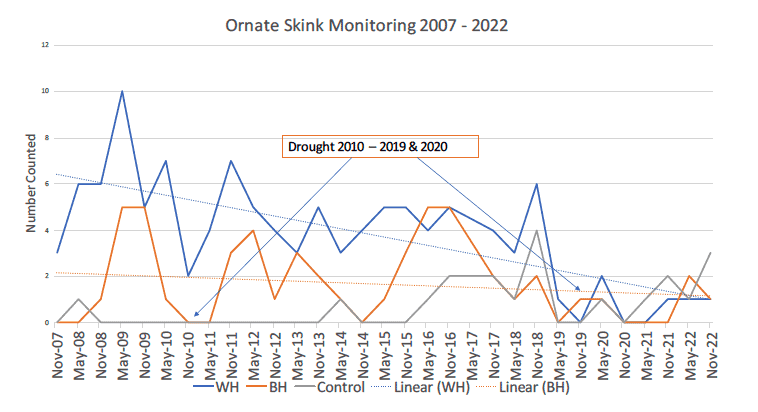
Tree species are also impacted by drought. The prolonged 2019/2020 drought caused a noticeable die off of taraire trees. On the other hand, Aotea bush has grown markedly through the three year La Nina period with easterly dominated warmer wet conditions. The local arborists claim up to 20% more growth on trees.
Our curiosity has led to, among many things, a professional survey for lizards and native frogs, four surveys for seabirds, eleven freshwater stream surveys we have a lot of koura , and vegetation surveys. We know that North Island robins translocated into contiguous bush habitat will not succeed long term. We have identified Ramarama tress to monitor the spread of myrtle rust.
We complete 2023 with a sigh of relief – it has been a tough year to maintain our capacity with a very small field team. In November, we welcomed new Field Team Manager Jordan Scarlett fresh from a ranger role at DOC. Jordan will be the first fully trained pest buster we have employed to date so he just needs to get to know where everything is and he is away.
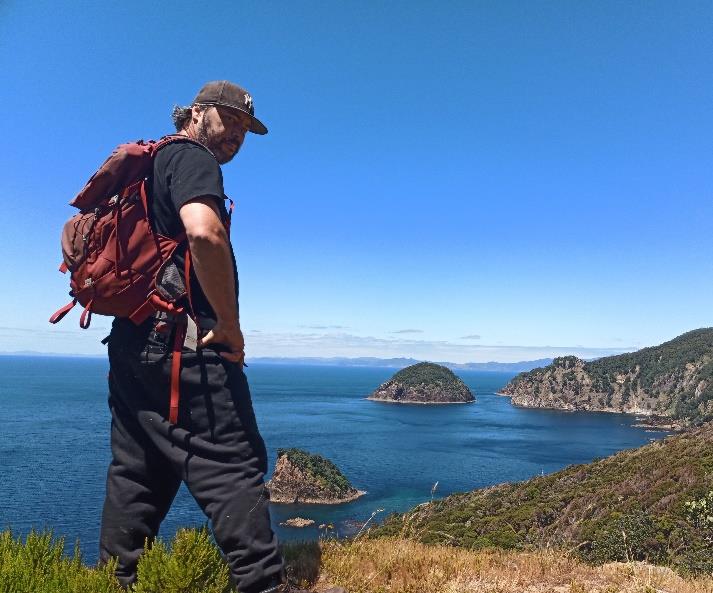
The years Field Manager, Maxine Barrowman, has steadfastly managed our Operational programme and despite the lack of capacity we still came out with a 9.2% rat tracking tunnel result for the year. A seriously good outcome – thank you Maxine. We are currently interviewing to fill the vacant places
on our field team and look forward to 2024 being back up to full swing. Reviewing our programmes through this time has also enabled some serious economising and this may well be able to be sustained.
In October, the Trust celebrated our 25 years of ecological restoration at a meeting of Sanctuary landowners. The Trust partners landowners in assisting to manage plant and animal pests over their properties. Thank you to those landowners who manage traps on their properties and report the catch. Thank you, Dean Medland for keeping a lid on the feral pigs. Thank you, Andy Saunders for the wonderful new website. Thank you, Derek Bell for your years of Trusteeship. Thank you to our generous funders and sponsors.
It’s been a truly wonderful experience to have learned, almost by osmosis, over the 51 years that I have been kaitiaki at Little Windy Hill what toanga we have here. It’s rich.
Wishing you all happy holidays
Judy Gilbert on behalf of WHRB Trustees John Ogden and Deb Badraun
